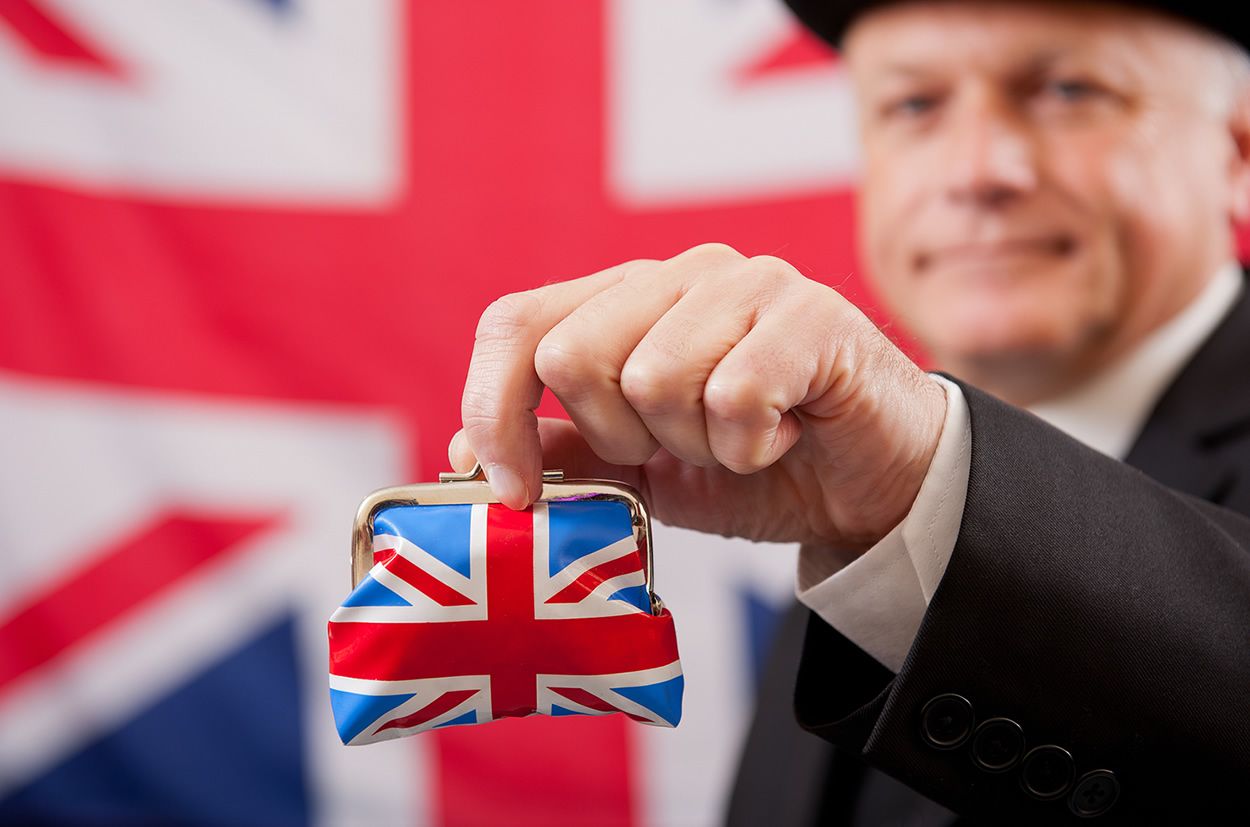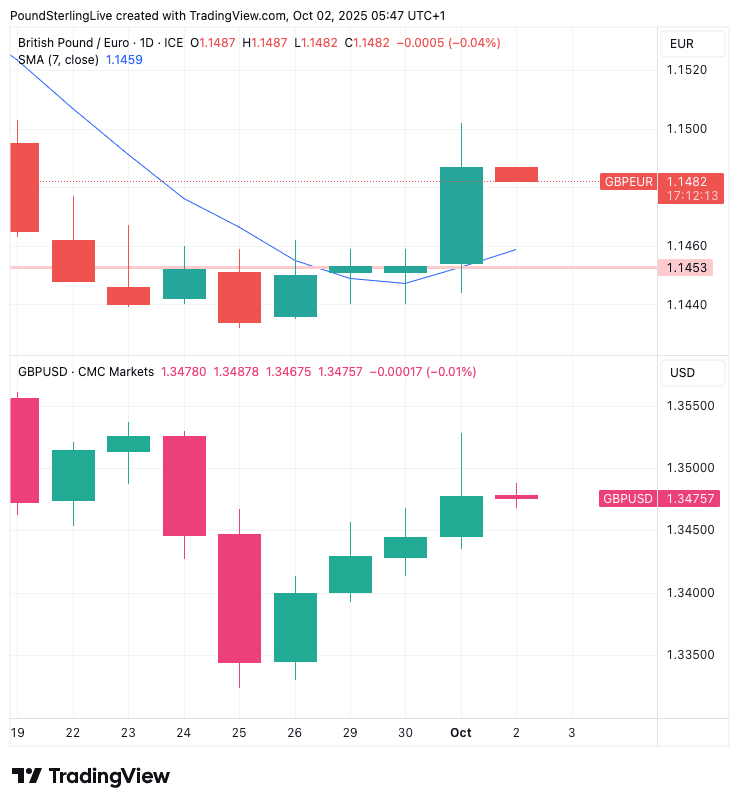
Image © Adobe Images
Pound sterling rises across the board as fiscal fears diminish, but worryingly, is unable to make the highs stick.
The British pound was a top-performing currency on the first day of the final quarter of the year, helped by a sense of relief that the Labour Party didn't blow the fiscal outlook out of the water at their just-ended party conference.
Fears of a lurch towards greater spending and borrowing were not realised, meaning a key event risk facing the country, and the currency was avoided.
Month-end currency market dynamics are also now behind us, while London's FTSE 100 trades at all time highs and outperforms its global peers amidst a broadening of the global equity rally.
Bargain hunting by international investors on the UK's stock markets will also have played a part in Sterling's perky start to October.
Despite a strong start to the month, Sterling was unable to hold the day's highs, hinting at asoft underbelly:
The pound to euro exchange rate rose as high as 1.15, before paring that advance to 1.1480 at the time of writing Thursday. Yesterday we had reported of a remarkable period of stability in the pair, and the renewed volatility has gone in the direction of euro buyers.
"The pound looks steadier now that UK fiscal fears have cooled, but intraday reversals in GBP/EUR and GBP/USD highlight that sustained upside still faces resistance," says George Vessey, Lead FX & Macro Strategist at Convera.
The pound to dollar exchange rate rose to 1.3527, before fading back to 1.3475. In fact, we saw similar patterns of trade against all G10 currencies: a strong gain that soon faded.
"The brief advance did not result in any significant increase in upward momentum, and GBP is unlikely to rise much further," says Quek Ser Leang, Senior Technical Strategist at UOB.
Ideally, the bulls would have wanted to see the advance hold to grow confident that sterling was turning a leaf.
Nevertheless, the technical outlook is much improved from the start of the week and there is now a decent base for the pound to extend the recovery in the coming days.
Labour's annual party conference was the main risk event for the British pound this week, as there was the potential for delegates to pressure the Chancellor, Rachel Reeves, to increase spending and borrowing.
There is also talk in some corners of the party urging her to disregard the bond markets and increase borrowing to fund social spending.
Despite this, Reeves confirmed her commitment to the fiscal rules, which should provide some assurance to markets.
Concerns about the UK's debt path have, at various points this year, boiled over into the bond markets, impacting the pound too.
Gains by the currency therefore suggest to us that the market is relieved the conference passed without incident.
Nevertheless, November 26 looms large as the next key date as this is when Reeves will announce her new budget. Fears of a slip up and punitive tax hikes will surely limit the pound's appreciation potential in the coming weeks.
"Our model has recorded two consecutive weeks of around 1% short-term overvaluation in EUR/GBP, which may well be a signal of markets starting to price in some GBP risk premium ahead of the UK budget. While the announcement is only on 26 November, it’s widely expected that many bits of the budget will be released to the media in the weeks before," says Francesco Pesole, FX Strategist at ING Bank.

